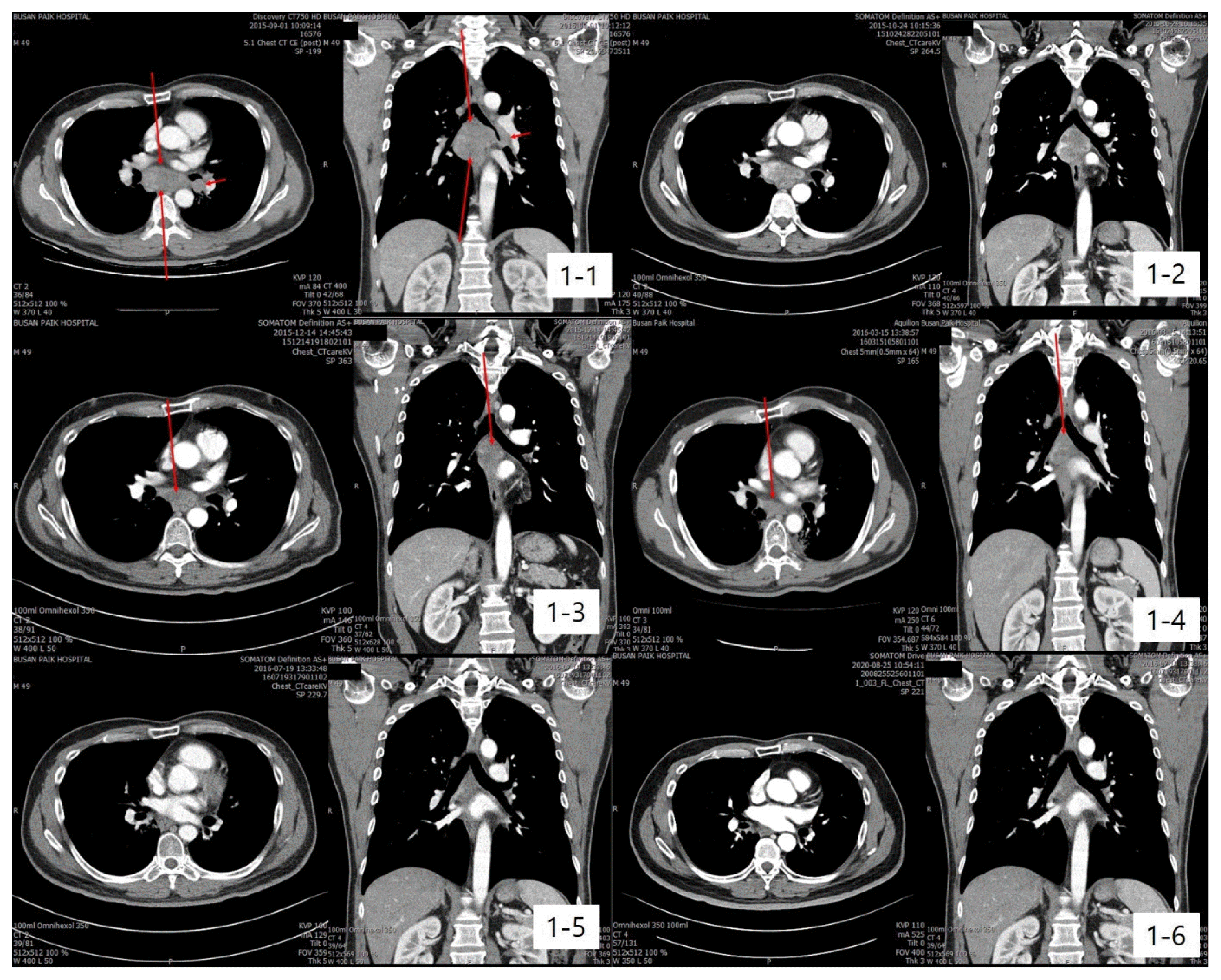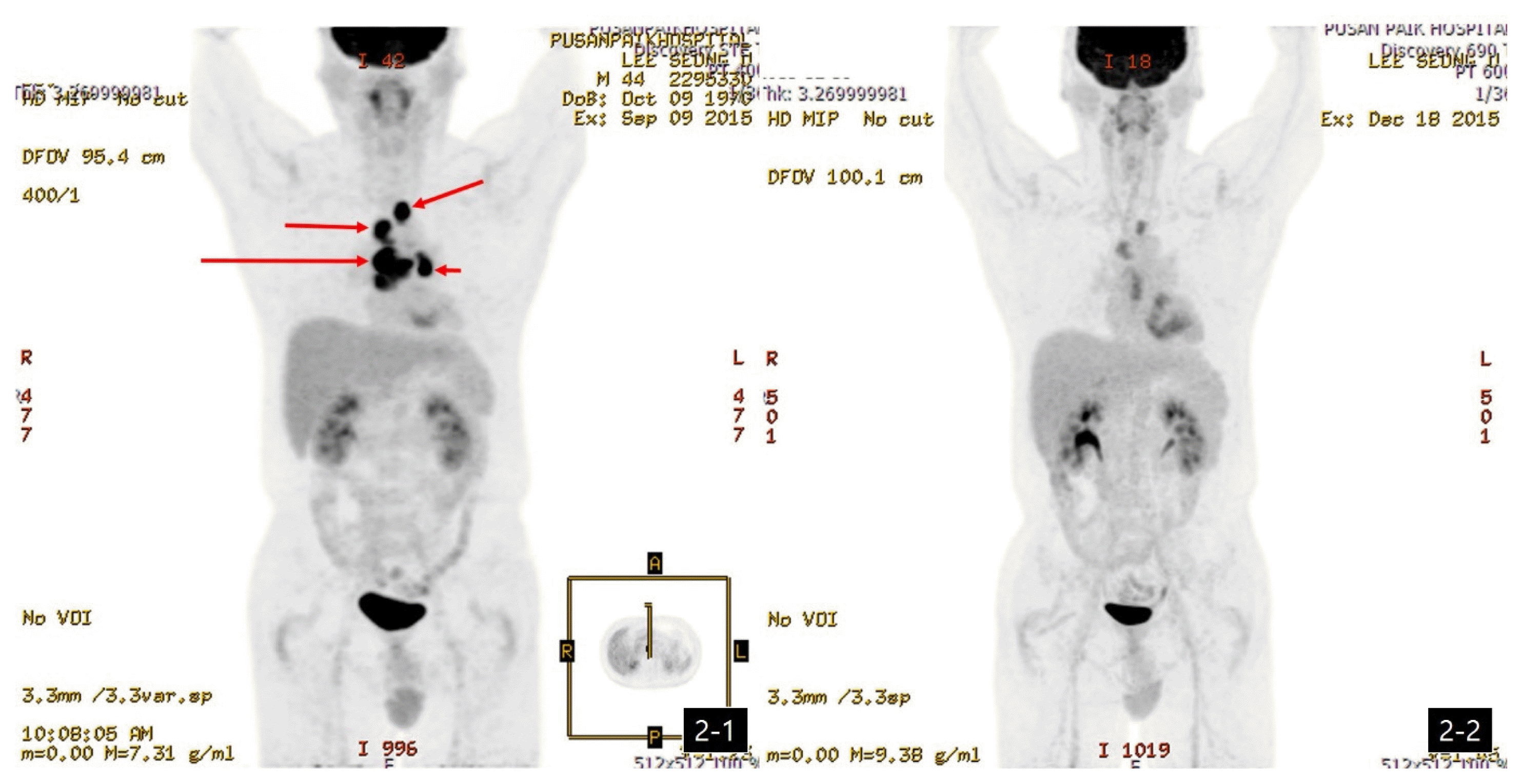References
1. Annual Report of national cancer statistics in Korea in 2017 National Cancer Center; 2019.
2. Jeong SH, Jung JH, Lee HW, Kang SY, choi YW, Ahn MS, et al. Concurrent Chemoradiotherapy with Weekly Paclitaxel for Locally Advanced Non-small Cell Lung Cancer. J Lung Cancer 2009;8(1):8–12.
3. Wu X, Chung VC, Lu P, Poon SK, Hui EP, Lau AY, et al. Chinese Herbal Medicine for Improving Quality of Life Among Nonsmall Cell Lung Cancer Patients: Overvies of Systematic Reviews and Network Meta-Analysis. Medicine 2016;95(1):e2410.
4. Liu J, Lin HS, Hou W, Hua BJ, Zhang PT, Li J, et al. Comprehensive treatment with Chinese medicine in patients with advanced non-small cell lung cancer: A multicenter, prospective, cohort study. Chin J Integr Med 2017;23(10):733–739.
5. Han GJ, Cho MJ, Park EJ, Seong S, Kim SS, Kim KI, et al. Analysis of existing guidelines and randomized, controlled, clinical trials for development of [guideline of clinical trial with herbal medicinal product for lung cancer]. J Korean Med 2019;40(1):153–173.
6. Jung HJ, Kim JD. The Role of Korean Medicine for Treatment and Management for Lung Cancer. J Kor Trad Oncol 2015;20(1):45–54.
7. Kin KS. Case Study: Regression of a residual tumor and prolongation of overall survival with allergen-removed Rhus Verniciflua stokes after chemoradiotherapy in locally advanced non-small cell lung cancer. J Int Korean Med 2015;36(2):200–206.
8. Park SJ, Kang HJ, Park JH, Cho CK, Yoo HS. A case report of a clinically diagnosed advanced lung cancer patient after treatment with Gunchilgyebok-Jung. J Kor Trad Oncol 2015;20(1):23–29.
9. Zheng HM, Yoon JW, Lee YW, Cho CK, Ph DS, Yoo HS. Case Series of advanced non-small cell lung cancer patients treated with Hang-am Plus. J Int Korean Med 2011;32(1):113–120.
10. Park SJ, Kim SY, Cho CK, Jung IC, Yoo HS. Preliminary study to develop the instrument of oriental medical evaluation for lung cancer. J Korean Med 2015;36(3):53–64.
11. Park JG, Bang YJ, Ha SH. Oncology 2nd rev edth ed. Seoul: Iljogak; 2012. p. 224–239.
12. NCCN clinical practice guidelines in oncology (ver.8) National Comprehensive cancer network; 2020.
13. Costa GJ, Ferreira CG, Thuler CS. Concurrent chemoradiotherapy for stage III non-small cell lung cancer: corredt clinical management as the basis to move beyond. Ann Transl Med 2018;6(Suppl 1):S65.
14. Lee JC, Yun HY, Yoo HS, Bang SH. A case report of complete response of advanced gastric carcinoma patient treated with Korean medicine treatment in conjuction with chemoradiation therapy. J Kor Trad Oncol 2014;19(1):25–32.
15. Wust P, Hildebrandt B, Sreenivasa G, Rau B, Gellermann J, Riess H, et al. Hyperthermia in combined treatment of cancer. Lancet Oncol 2002;3(8):487–497.
16. Garaci E, Pica F, Matteucci C, Gaziano R, D’Agostini C, Miele MT, et al. Historical review on thymosin α1 in oncology: preclinical and clinical experiences. Expert Opin Biol Ther 2015;15(Suppl 1):S31–9.
17. Fritz H, Flower G, Weeks L, Cooley K, Callachan M, McGowan J, et al. Intravenous Vitamin C and Cancer: A Systematic Review. Integr Cancer Ther 2014;Jul. 13(4):280–300.
18. Kwon KR, Kim HD, Kim JS, Yoo HS, Cho CK. Case series of Non-small cell Lung cancer treated with mountain Ginseng pharmacopuncture. J Acupunct Meridian Stud 2011;4(11):61–68.
19. Dai D, Zhang CF, Williams S, Yuan CS, Wang CZ. Ginseng on Cancer: Potential Role in Modulating Inflammation-Mediated Angiogenesis. Am J Chin Med 2017;45(1):13–22.




